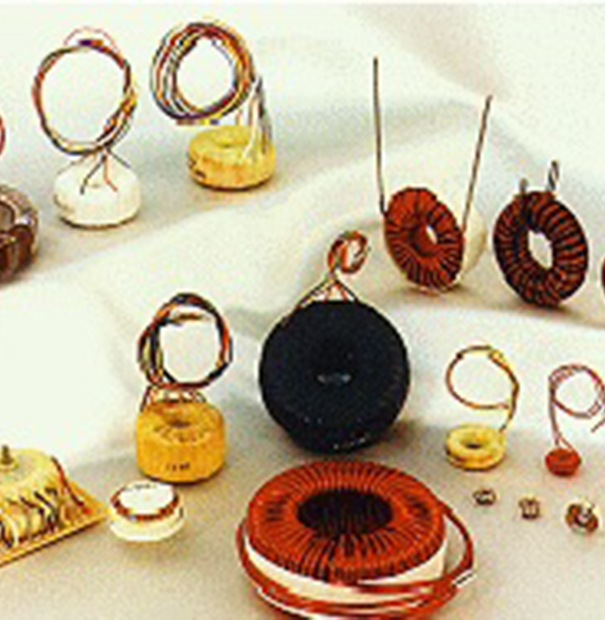Toroids
Making the proper considerations for inductor design is an integral part of designing toroids. Aside from the intended use of the device, there are a series of important factors that must be considered when specifying and designing an inductor.
Always consider:
Core Materials: the selection of core material is arguably the most important consideration to make. Each material is different in how it behaves (even if it is only a slight variation). Some materials store a large amount of energy at low frequencies or DC, but at the same time, they have high losses at higher frequencies. Materials that have low loss rates at high frequencies are commonly not able to store significant amounts of energy. The best material selection is dependent on circuit requirements.
Although a wide array of materials is used for constructing cores, materials are usually separated into one of only a few categories (air, ceramic, powder, solid magnetic metal).
And the iron core is manufacture from tape or strips of sheet steel that is wrapped around itself. Many of the magnetic metallic alloys used are sensitive to pressure, so when using them, make sure to keep them cushioned.
Powdered cores blend powdered metals that are pressed, annealed, and sintered into final core shape. Powdered metal is typically used for building inductor cores (permalloy, molybdenum). The benefits of powder over solid include uniform distribution of air gaps and consistent core loss.
custom coil winding
Once cores are built, you can begin to consider custom coil winding.
Related Reading:
- Toroids are Lightweight and Small
Toroids are also commonly used because they produce a limited noise and they have a very low magnetic interference field. A toroid is an ideal compact power supplier.
- Learning More About Toroidal Transformers
- Comparing Toroids and Conventional Transformers

